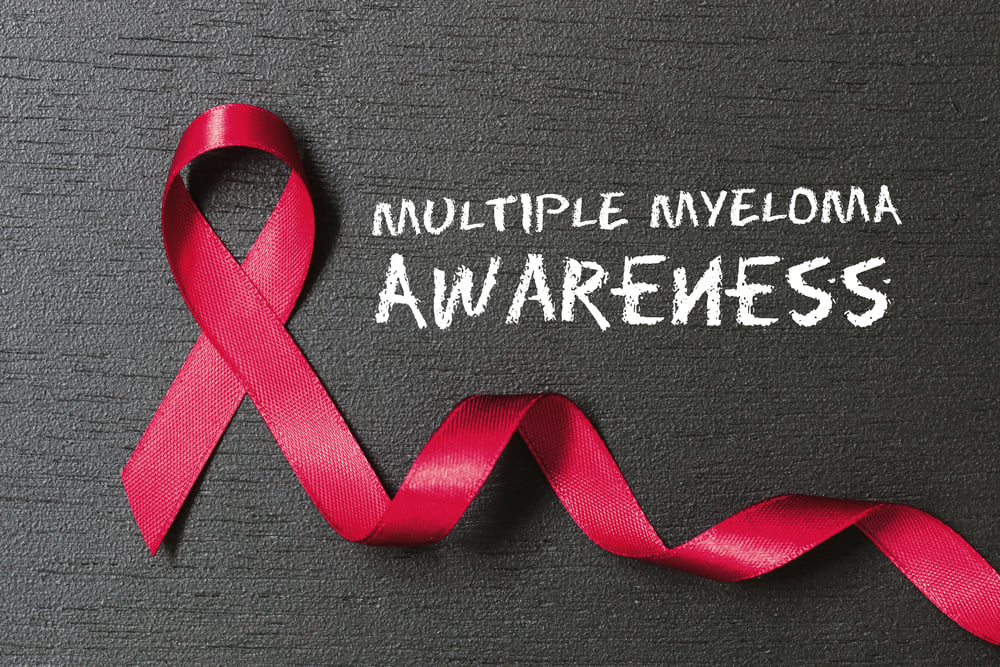Multiple Myeloma: The Facts We Need to Know
Multiple myeloma is a type of cancer that forms in plasma cells. When they’re healthy, plasma cells make antibodies that help your body recognize and fight the viruses and bacteria that can make you sick. In multiple myeloma, unhealthy plasma cells build up in the bone marrow until there’s not enough room for healthy cells to function normally. Here’s what you need to know:

Related Topics (ads):
Types of Multiple Myeloma
There are several types of multiple myeloma, but there are two types that are overwhelmingly more common than the other types:
Hyperdiploid Multiple Myeloma
Hyperdiploid multiple myeloma (HMM) is a less aggressive form of the disease. It’s the most common type and accounts for about 45% of cases.
Non-Hyperdiploid or Hypodiploid Multiple Myeloma
Non-hyperdiploid multiple myeloma is the second most common type, and it accounts for about 40% of all cases. This type is more aggressive than HMM.
Risk Factors for Multiple Myeloma
Anyone can get multiple myeloma, but it’s most common in people over 60, and there are some factors that are associated with a higher risk of developing the disease:
- A previous diagnosis of monoclonal gammopathy of undetermined significance (MGUS), as most cases develop from this benign condition.
- Male sex. Men are more likely to develop the disease.
- Family history of the condition
Signs & Symptoms
The symptoms associated with multiple myeloma are also characteristic of many more common, less severe conditions. If you have any of the following symptoms, though, and you’re not sure what’s causing them, see your doctor as soon as possible.
- Spine or chest pain that feels like it’s in the bones
- Stomach issues, like nausea and constipation
- Loss of appetite or weight loss
- Unusual thirst
- Fatigue and “brain fog”
- Weakness or numbness in the legs
Diagnosis
Sometimes, doctors find multiple myeloma accidentally when they’re testing for something else. If they suspect the disease, though, there are a few tests they can use to confirm the diagnosis.
Doctors use blood tests to find abnormal proteins produced by myeloma cells. The presence of specific proteins can also help a doctor stage the cancer. The abnormal proteins may also be detectable through urine tests.
Imaging tests and biopsies can help doctors assess the speed at which the cancer is developing, as well as the effect it’s having on the bones.
Grading & Staging
Multiple myeloma is staged from zero to three, with zero being the least severe. They’re staged based on the levels of albumin and beta-2 microglobulin (two types of proteins) in the blood.
- Stage 0: Smoldering myeloma is an early type of multiple myeloma that doesn’t cause symptoms. Multiple myeloma in this stage usually doesn’t require treatment, but it’s closely monitored for progression.
- Stage 1: A small number of abnormal cells are present. It’s marked by beta-2-microglobulin levels that are a little higher than usual, and albumin levels that are slightly lower.
- Stage 2: This is an intermediate stage. Doctors assign this stage when the disease has progressed beyond stage 1 but hasn’t reached stage 3.
- Stage 3: There are a lot of myeloma cells. Beta-2-microglobulin levels are high, and albumin levels are low.
Treatments
There are several standard treatments for multiple myeloma. In many cases, doctors will combine treatments to get the best result.
Targeted Therapy for Multiple Myeloma Cells
In targeted therapy, doctors administer drugs that target specific characteristics of abnormal cancer cells. When the drugs modify these characteristics, the cells can’t survive.
Biological Therapy
Biological therapy drugs help the body’s immune system fight abnormal cells. They enhance the immune system’s function so it can target and destroy the harmful cells.
Chemotherapy
Chemotherapy is a standard treatment for many types of cancer, including multiple myeloma. It kills aggressive (fast-growing and spreading) cancer cells.
Corticosteroids
Usually used alongside other treatments, corticosteroids can fight multiple myeloma cells.
Radiation Therapy
Like chemotherapy, radiation therapy is a common treatment for various types of cancer. Radiation therapy targets multiple myeloma cells in a localized area. It works by shrinking the cells.
Bone Marrow Transplant
Doctors perform bone marrow transplants to replace unhealthy bone marrow with new, healthy bone marrow. In a bone marrow transplant, doctors use chemotherapy to destroy the unhealthy tissue, and then introduce stem cells into the body to rebuild the bone marrow.
Outlook
The outlook for people with multiple myeloma is variable. It depends on a range of factors, including the cancer’s stage, the person’s age and overall health, and the effectiveness of treatments. With improved treatments, survival rates are improving. Speak with your doctor about your unique case.
If you’ve recently been diagnosed and you feel you’d benefit from support, reach out to the International Myeloma Foundation.
*All information acquired from Mayo Clinic, the American Cancer Society, and the International Myeloma Foundation.